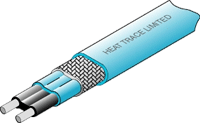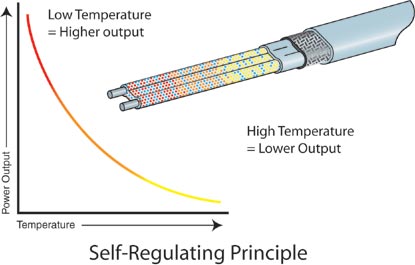|
What are Self Regulating Heating Cables?
Since their introduction in 1971, self-regulating heating cables
(also referred to as self-limiting heating cables) have become
the most common form of electric heat tracing cable used in the
world today. Heat Trace Limited are the only heat tracing manufacturer
in the UK producing self-regulating heating cables and one of
only a few worldwide. Heat Trace Limited is now considered to
be one the leaders in heating cable polymer technology, with a
range of self-regulating heaters that are technically superior
to most of the other products currently available.
These cables can be used for a wide variety of applications including
freeze protection of pipework and vessels; process temperature
maintenance; heating of roads, ramps, walkways, etc; roof and
gutter heating and under floor heating. See Applications page
for more detailed information, or check out our range of self-regulating
heating cables

How do they work?
The cables consist of a semi-conductive polymeric matrix extruded
between two parallel bus-conductors which serves as the heating
element. A polymeric insulator jacket is then extruded over this
core and an optional tinned copper braid, fluoropolymer or thermoplastic
overjacket can then be added for additional mechanical and/or
corrosive protection. A current is passed through the cable and
as the temperature of the conductive core increases, so does the
electrical resistance
The result is that the output of the heater decreases as the
temperature rises (see image below). Since power output of the
cable is a function of the temperature at any location in the
element, the conductive core behaves like a temperature rheostat
guarding against low as well as high temperature failure.

Self-regulating heating cables cannot overheat or burn out -
even when overlapped upon themselves. This makes them inherently
temperature safe. The heating cable can be cut to length on site
and exact lengths can be matched to pipework without any complicated
design considerations. The installation of these cables require
no special skills or tools and can be carried out efficiently.
Heat Trace also supply Ancillary components for use with all of
Heat Trace self regulating cables.
|

